Solutions for the last mile
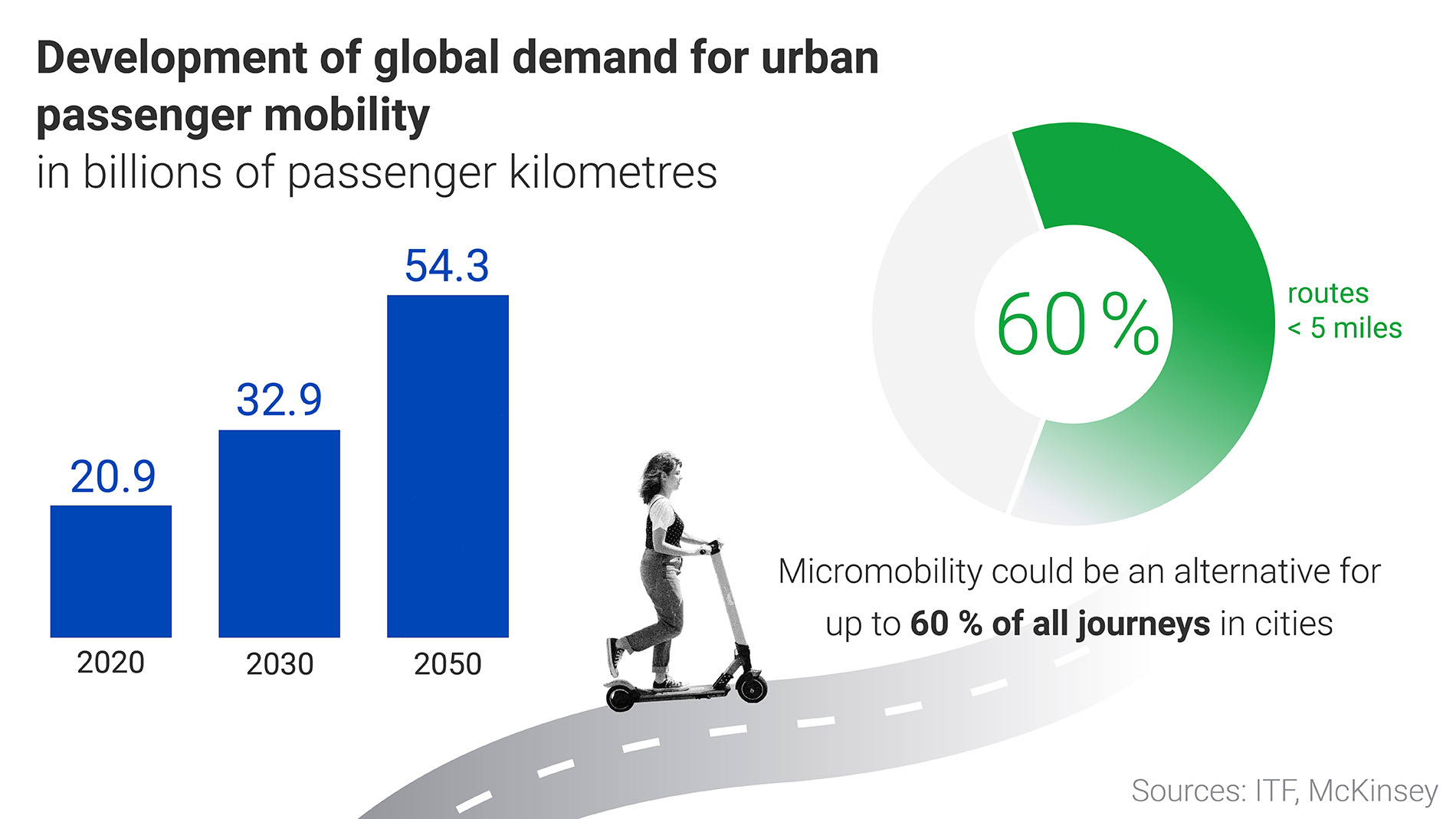
Given the global population living in cities is expected to increase by up to 50 per cent to 6.7 billion people by 2050, cities will play a key role in climate change. As a mix of small, mostly electrically-powered modes of transport, micromobility can counteract emissions, congestion and a lack of space. 50-60 per cent of individual city journeys comprise no more than eight kilometres at a speed of 15 kilometres an hour, but account for two thirds of traffic on the road. Micromobility means that these journeys can be undertaken in a more environmentally friendly, quicker and cheaper way. Greater interconnectedness also increases the efficiency of these solutions.
Cleaner – and faster!
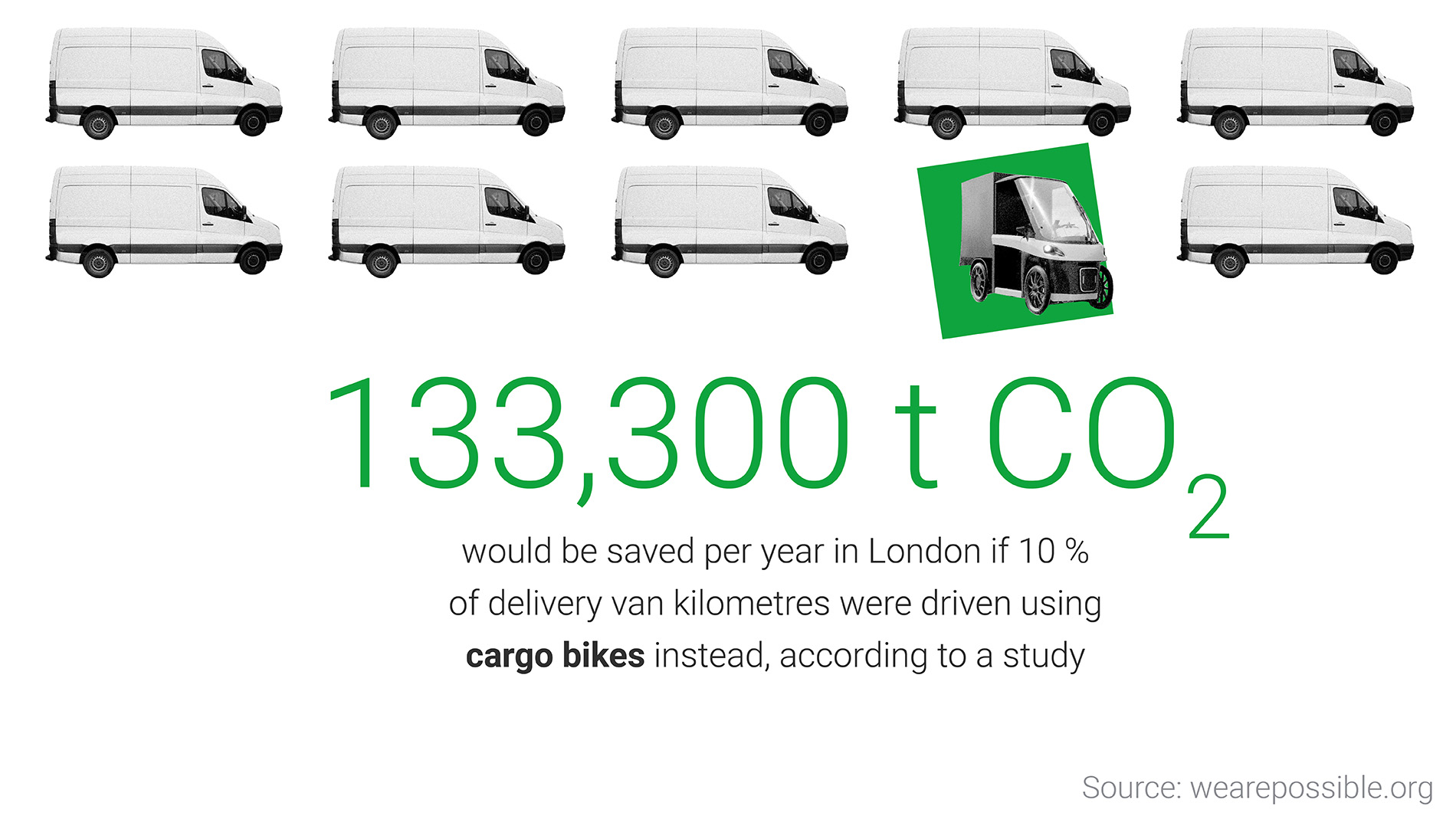
Even today, cities are heating up the planet and they generate around 80 per cent of global greenhouse gas emissions, with around a fifth of these coming from goods transport. The modes of transport used in micromobility, which are largely emission-free, are expected to cover up to ten per cent of the total transport capacity. In London, a study has detailed the impact on the climate if the city’s 213,100 vans were gradually replaced by cargo bikes – and what it would mean in terms of freeing up parking spaces and reducing the number of accidents. Plus the time taken to make a delivery would be speeded up: 1.61 times faster, to be precise.
The new city fleet
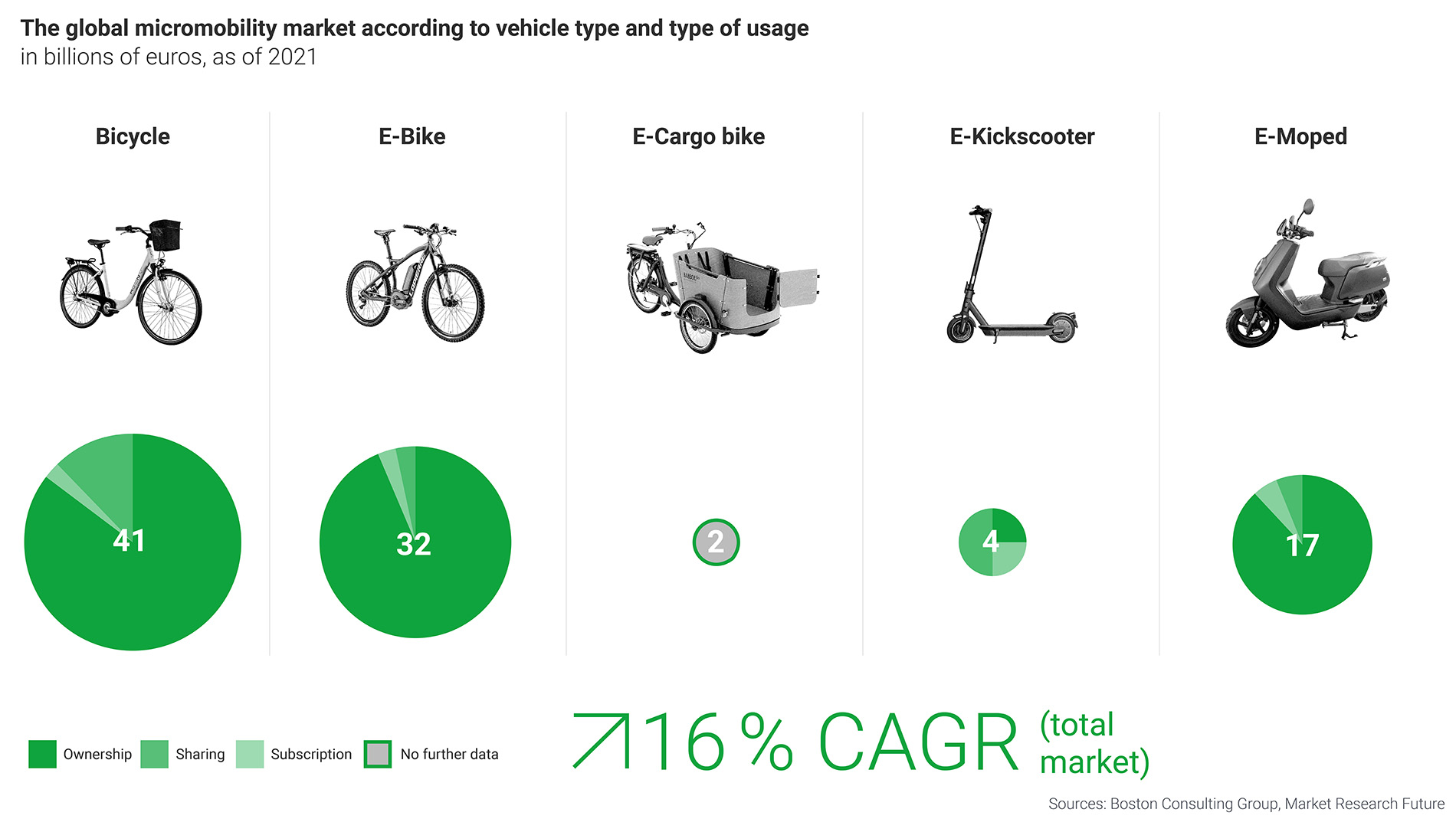
Big regional differences
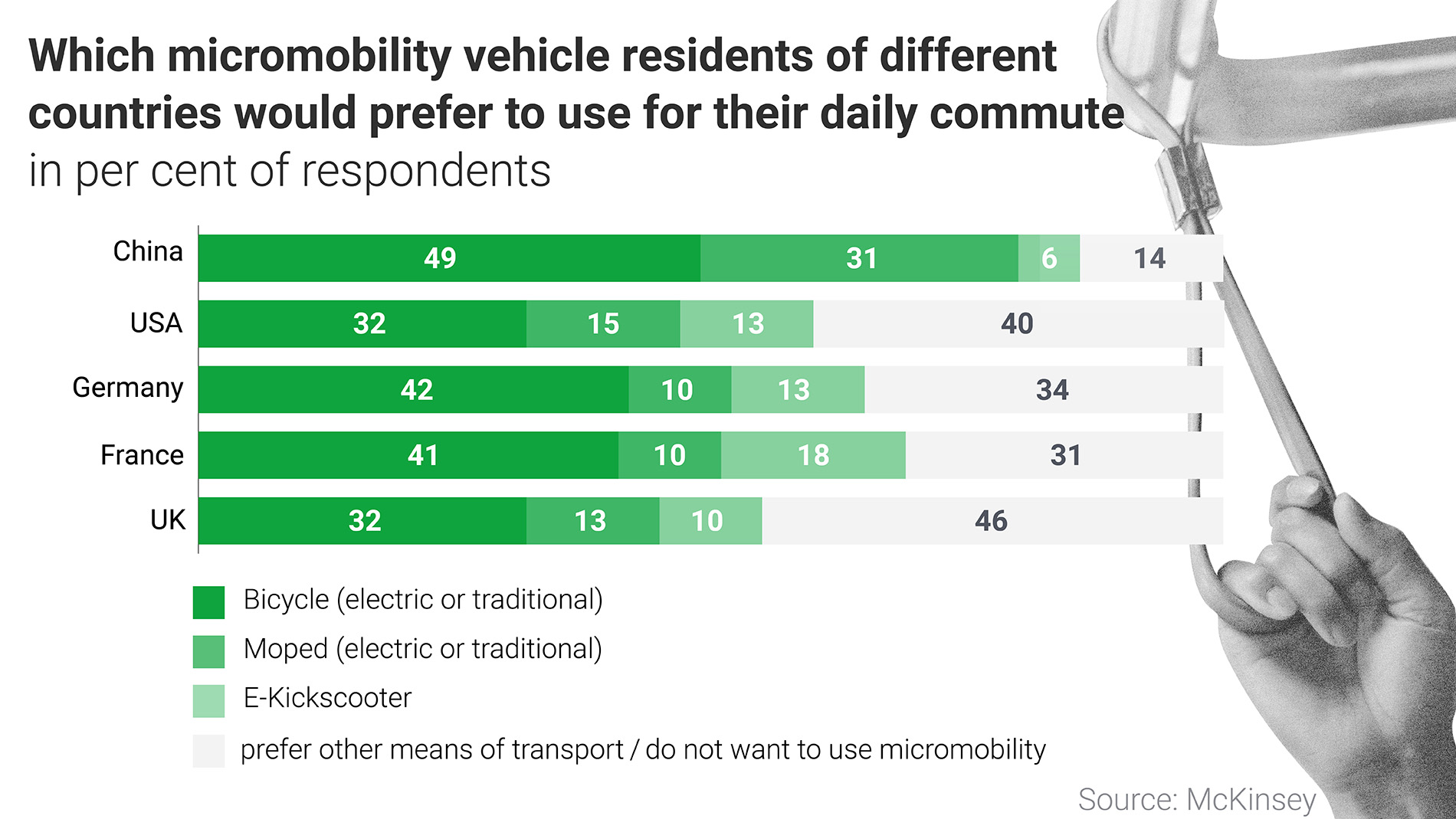
The interest in small vehicles is highest in countries that have a tradition of micromobility such as Italy and China, but is lower in the USA. Generally, any type of bicycle is preferred as these have a greater range and more stowage space compared to electric scooters and are also cheaper to buy than mopeds. One exception here is the popularity of mopeds in China, where no driving licence or insurance is required for vehicles capable of up to 25 kilometres an hour. There is a greater reluctance to adopt e-scooters in the UK and China, where they have already been banned. People are more open towards e-scooters in the USA, France and Germany, where sharing systems have been set up.
Investors wager billions
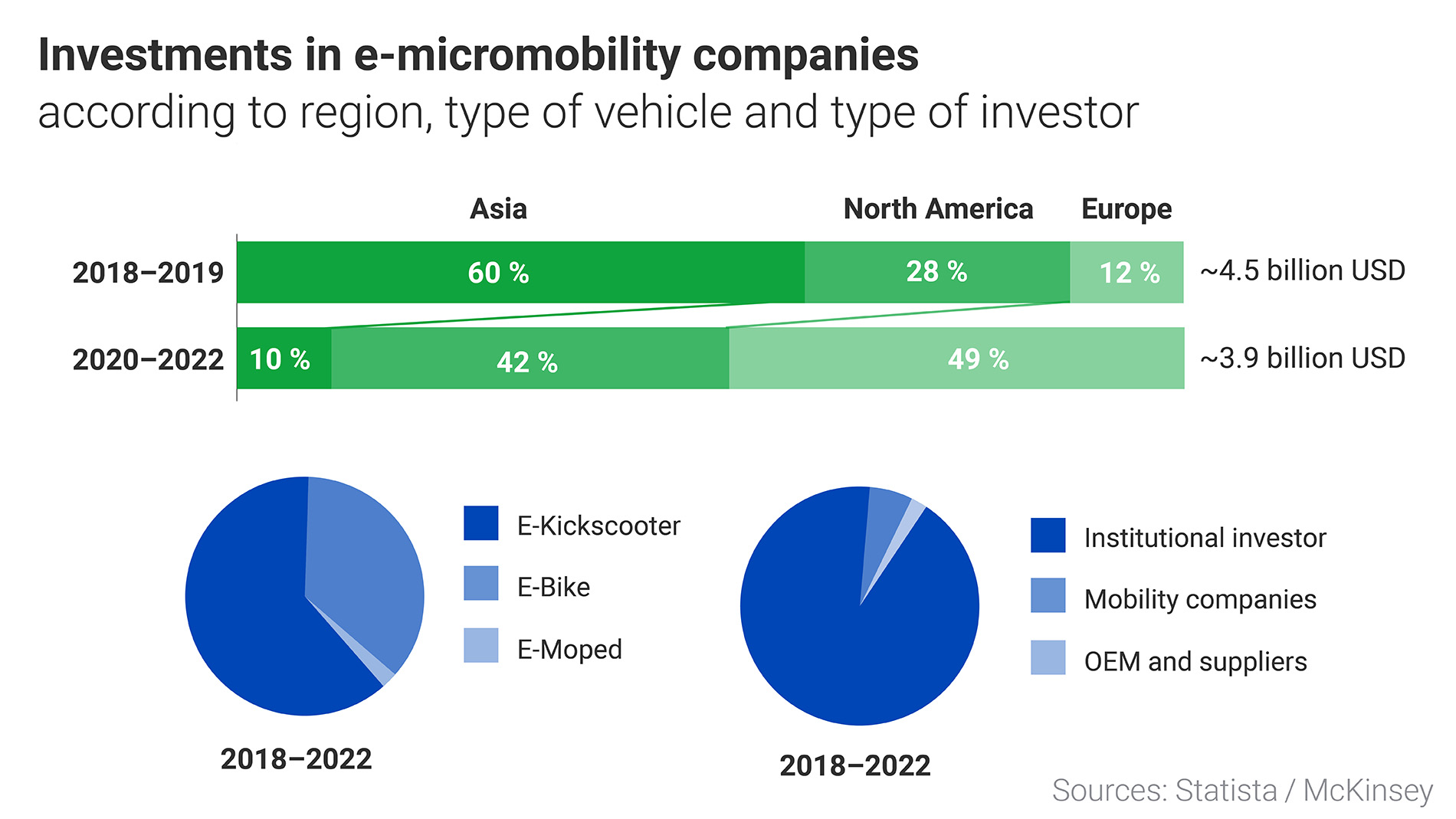
By 2030, micromobility is expected to generate up to 150 billion US dollars in Europe, and as much as 500 billion worldwide. The market is growing two to three times faster than car sharing and booking services for mobile end devices. According to McKinsey, users value e-scooters and similar means of transport because they are cheap and fast. And as for providers, they find that if they purchase a scooter for approx. 400 US dollars, it will pay for itself after just three months. Globally, investors have so far provided financing in the region of 8.4 billion dollars for micromobility start-ups. These include scooter and bikesharing service providers whose market value is now worth more than one billion US dollars.
Networking – the public task
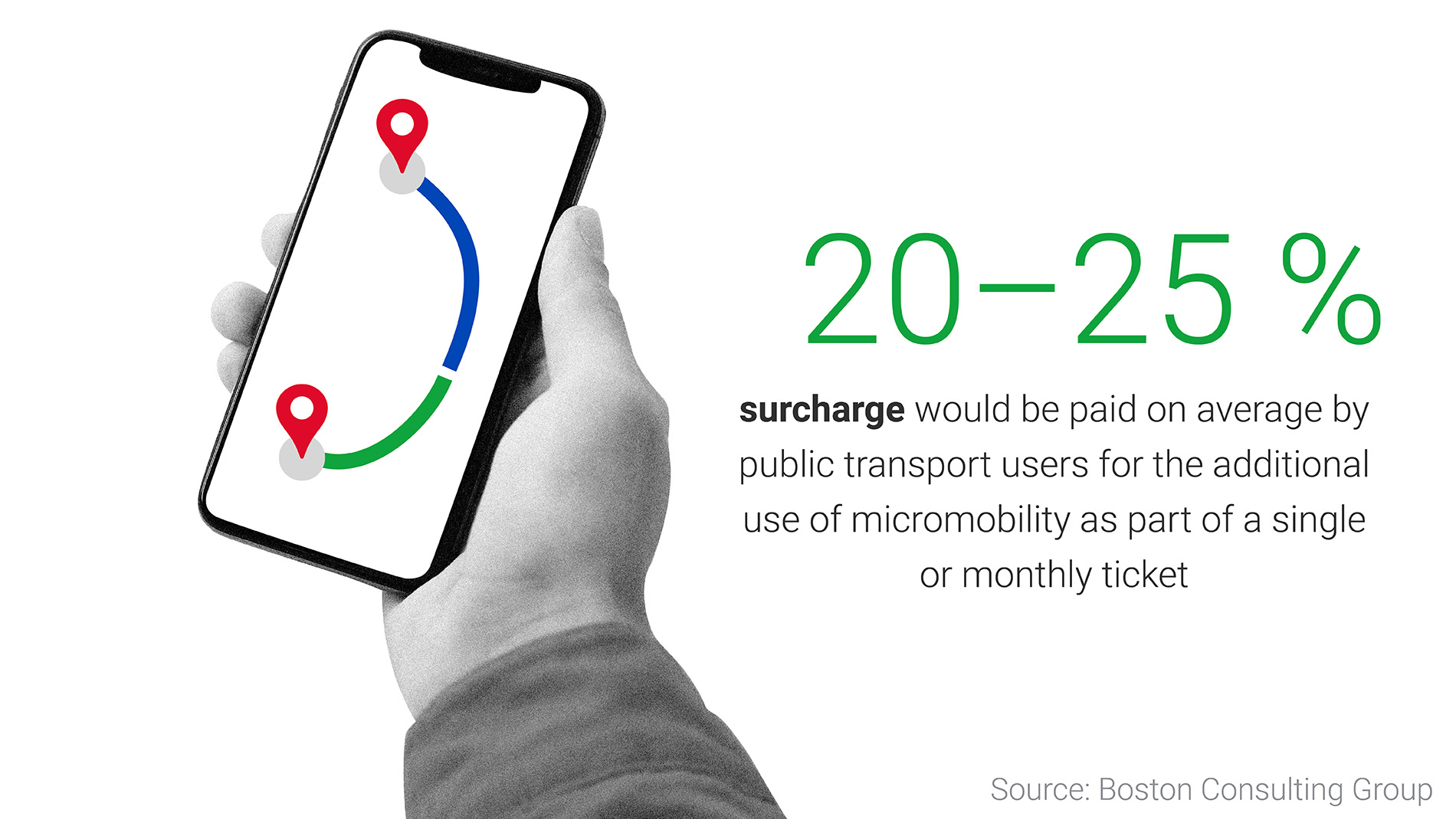
In order to integrate micromobility successfully, cities, operators and transport companies must work more closely together. The prerequisite is understanding who uses micromobility and why – or why not. Without this kind of segmentation, decision-makers overlook differences in the habits and needs of users, who are the ones who ultimately determine the success of urban transport planning. Apps offering navigation and payment models are increasingly networking public transport with micromobility, thus enticing people to switch to this form of transport. The best apps are ones that offer embedded intelligence to support the desired functionality.
Micromobility as an innovation laboratory
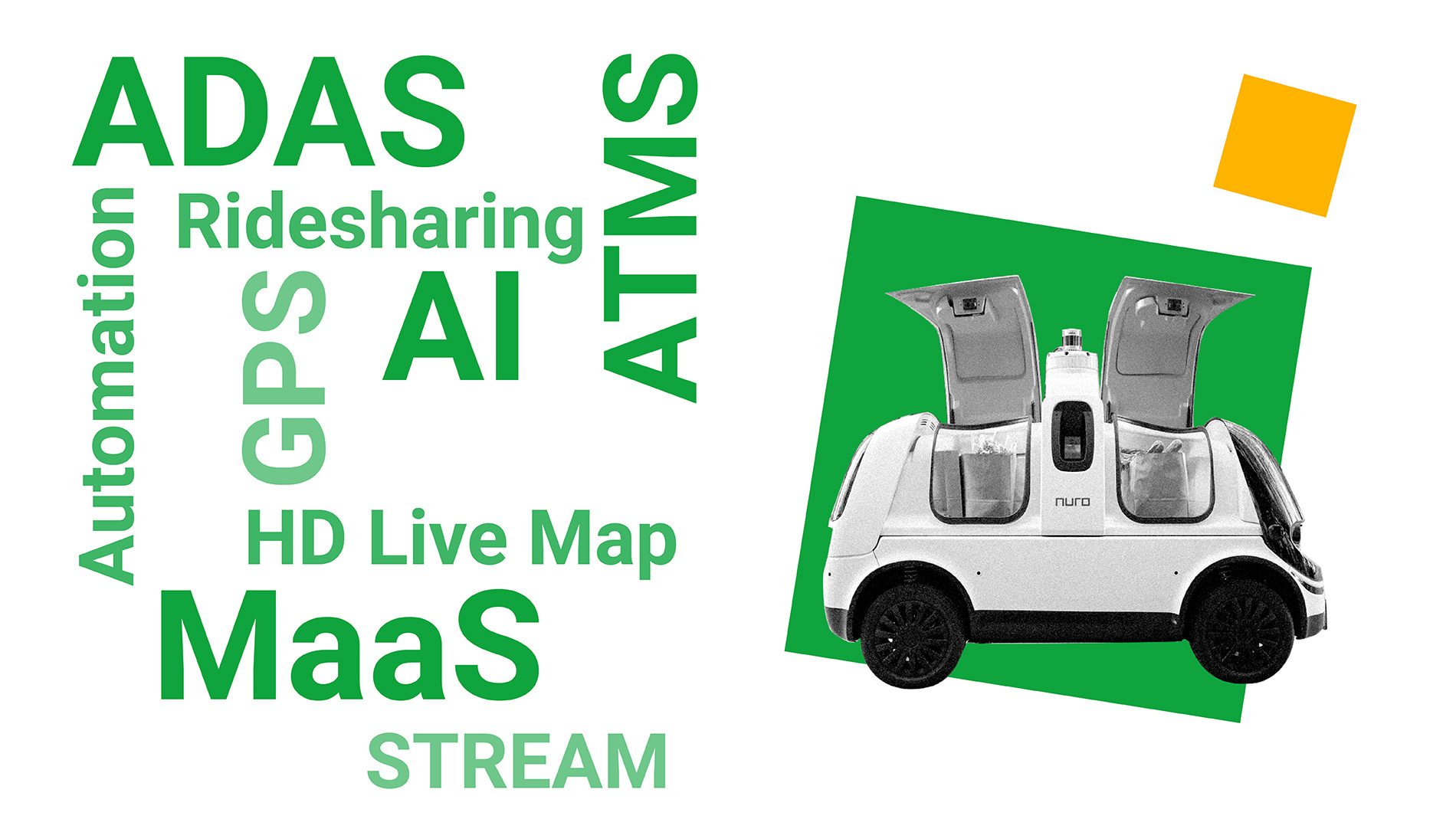
In many cities, e-scooters are being rejected or even banned, which has already led some companies to develop really intelligent scooters. Such companies are testing e.g. camera-based systems that recognise if a driver makes a mistake or does something forbidden and stops them in real time. This is turning micromobility into a pioneer of sensor-based Advanced Driver Assistance Systems (ADAS) because it is a quicker way of getting innovations distributed, plus all their potential for further development. Micromobility is also playing a pioneering role in AI applications, robotics, the monetisation of data and the development of ‘Mobility as a Service’ (MaaS) offers and shared-ride business models.

Whether cargo bike, e-bike or road bike: EUROBIKE is the world's leading trade fair for the bicycle and mobility industry. This time, over 1,900 exhibitors will present the latest models and trends on 150,000 m² at the Frankfurt Exhibition Centre. The Business Days (21-23 June) are reserved for trade visitors, while on the Festival Days (24-25 June) end consumers can also get an idea of the new trends.
